|
Asphalt Resurfacing
|
|
Asphalt surfaces have a typical service life of 8 to 12 years, depending on traffic
and weather conditions. Asphalt resurfacing is necessary when the asphalt surface has
reached the end of its service life or if other methods of restoration cannot repair the roadway.
A new asphalt surface will improve driving conditions as well as the aesthetics of the roadway.
Asphalt resurfacing is a multi-step process that usually involves several work crews, accompanied by
proper construction signs and work-zone traffic control measures to maintain public safety.
Resurfacing an asphalt roadway requires the following steps:
-
Adjustment (lowering) of utilities to allow milling machines to traverse the
roadway without damaging utility assets.
-
Removal (milling) of old surface using a milling machine. All milled surfaces
must be cleaned by the milling contractor and marked appropriately to safely
direct traffic. (Milling may not be required on streets with no curb and
gutter; however, the edges of streets with no curb and gutter may be trimmed
prior to milling in order to provide a more uniform milled surface.)
-
Re-adjustment (raising) of utilities so that they will again be flush with the
new surface that will be applied.
-
Application of a tack coat to milled surface to serve as a binder for the new
surface that will be applied.
-
Application of new paving surface by paving machines.
-
Application of new thermal plastic pavement markings on new pavement surface.
Below are pictures of the asphalt resurfacing process.
|
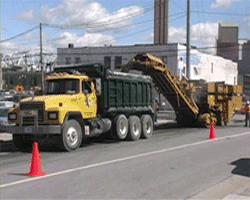
|
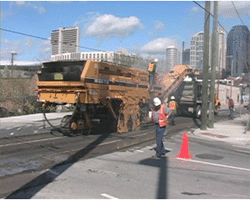
|
1. Workers mill the existing asphalt surface in preparation for asphalt resurfacing
|
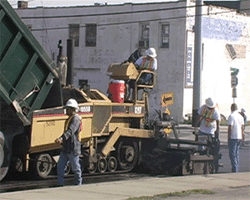
|
|
2. Workers resurface the roadway with asphalt
|
|
|
|
|
Rejuvenation
|
|
Rejuvenation is a preventive maintenance technique applied to newly paved streets to replenish lighter oils
and rejuvenate the roadway in order to prolong its service life. Because the cost of applying surface treatments
is minimal compared to resurfacing the roadway, Metro makes an effort to utilize surface treatments to extend the
service life of streets throughout Davidson County
Rejuvenation Process includes following steps:
- Before surface treatment can be applied, the roadway must be cleaned. A power broom is used to clean the roadway surface.
- The surface treatment will be applied from a distributor truck.
- Workers will manually spray corners and hard to reach areas.
- The street will be covered with a layer of sand for approximately 24 hours while the surface treatment cures.
- The sand will be swept by the contractor.
Below are pictures of the surface treatment process.
|
|
|
|
|
|
Crack Sealing
|
|
Over time, sunlight oxidizes the
oils in asphalt, causing the asphalt to become brittle
and develop cracks. Cracks in asphalt roadways provide a
place for moisture to reach the pavement base and will
ultimately lead to more extensive deterioration. Crack sealing
is a maintenance method to repair construction
joints, and longitudinal cracks in the
roadway. Crack sealing is necessary to prevent
water from entering the base of the roadway, which could
require major reconstruction.
The Crack Sealing Process includes the following steps:
-
The cracks in the roadway may be cut out to a specified depth.
-
The workers will clean and dry the open roadway cracks with high-pressure air
and heat.
-
A hot-pour crack sealant will be applied.
-
Sand will be placed over the sealant to reduce stickiness.
Below are pictures of the crack sealing process.
|
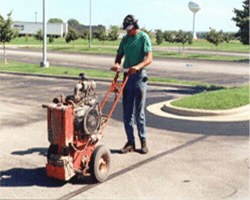
|
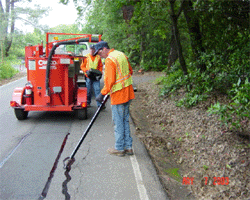
|
|
1. Worker cuts out crack in the roadway to prepare it for sealant
|
2. Crack in the roadway is dried with a heat lance
|
|
|
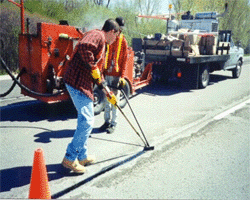
|
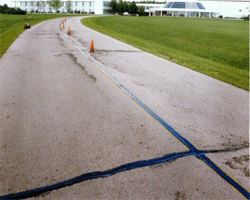
|
|
3. Crew fills cracks in the roadway with hot polymer sealant
|
4. Roadway after crack sealant has been applied
|
|
|
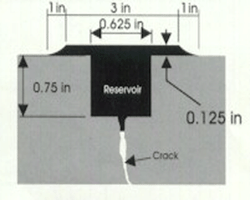
|
This illustration shows a typical detail of a crack sealant application
|
|
|
Infrared Repair
|
|
A technique where infrared heating systems apply heat to pavement
surfaces and aid in the removal of existing material and replacement with new asphalt
mixture. Infrared thermal bond bituminous pavement patching is a method of blending
new asphalt mix with infrared heated existing blacktop pavement to create a joint-free
integral patch. A special machine is used to heat the existing blacktop to a depth of
approximately two inches without oxidation or burning. There is no flame in direct
contact with the existing blacktop surface. The unit is also equipped with chambers which
are capable of storing up to four tons of fresh bituminous materials at a consistent temperature.
Infrared Repair includes following steps:
- Before repair can be made the area must be heated with infrared machine.
- New mix is added.
- The new mix is heated with the infrared machine.
- The repair are is compacted.
Below are pictures of the infrared repair process.
|
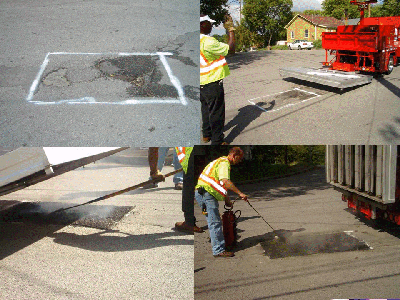
|
|
1. Heating area to be repaired with Infrared machine.
|
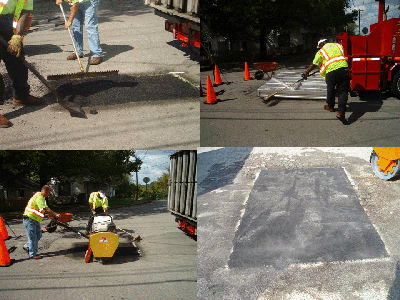
|
|
2. Adding new mix, heating and compaction.
|
|
|
|
|
Fog Seal (PASS)
|
|
PASS emerged in the test sections as a good material to minimize raveling
and extend lifetime of roadways that were last paved 8 to 9 years back. PASS is polymer
modified asphalt surface sealer applied as a fog seal. The image below shows the application of PASS
on Metro roadways. PASS costs about $0.60 per sq yard as compared to traditional mill and
overlay at about $6.00 per sq yard (1.5” overlay). PASS lets Metro Nashville extend a
roadway’s lifetime by about 5 years before resurfacing is needed.
|
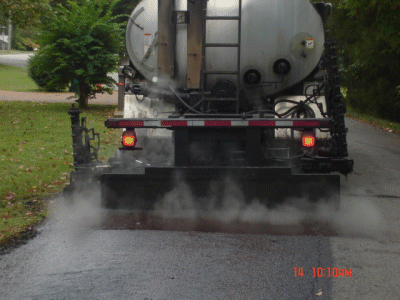
|
|
Application of PASS surface sealer on Metro street.
|
|
|
If you have any further questions regarding Metro Nashville Paving Program, please do not hesitate to Contact Us.
|
|